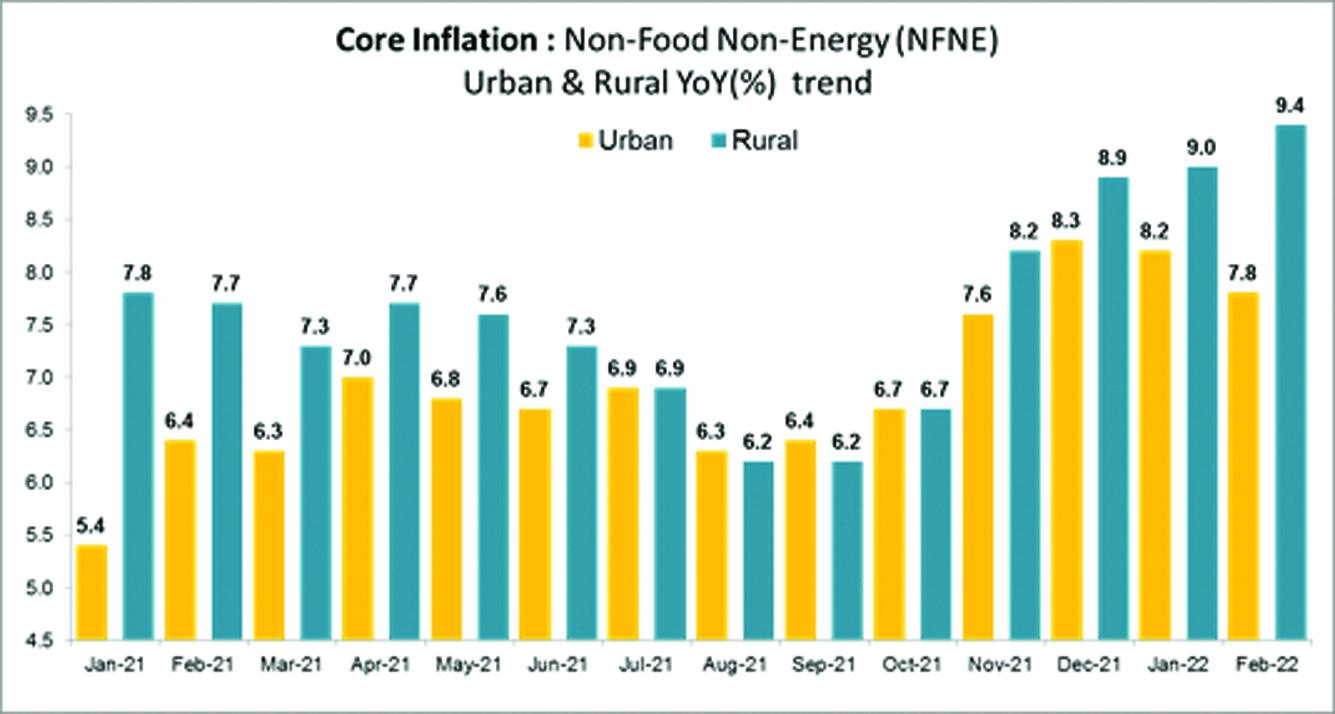The headline inflation clocked at 12.4 percent in February 2022 as compared to 13 percent in the previous month. The increase is 1.2 percent on monthly basis with almost half the increase attributed to tomatoes –prices tripled in a month. The higher growth in food prices is partially compensated by lower housing and utilities index – mainly due to electricity surcharge and gas. Then there are number of sub-indices where the cost pressures are driving monthly increase – such as clothing & footwear, health, finishing and household equipment and restaurants. Not to mention, transportation continued to remain high and that is probably driving inflation in many other sectors.

Seeing this inflationary trends and impact of passing on the oil prices increase to other sectors, PM has decided to lower the prices of petrol, diesel, and electricity. It goes without saying that political pressures are contributing to this and other relief package.
The SPI eased a bit in Feb to 18.7 percent from 20.9 percent in the previous month. Same is the story of WPI –at 23.6 in Feb 2022. Both SPI and WPI are still very high despite a marginal decline. In this backdrop, PM package has some rationale to ease the prices pressures.

The 7MFY22 CPI is 10.5 percent versus 8.3 percent in the same period last year. The inflation is likely to remain in double digits despite the relief package. The full year inflation is likely to be around 11 percent – close to upper band of SBP’s estimates of 9-11 percent. The monetary policy decision of keeping negative interest rates in the short run as per the latest forward guidance is based on the prudent fiscal actions to counter demand. Let’s see how SBP reacts to the PM’s package on 8th March in its forward guidance.
Food prices – especially for perishable items remained high – up by 14 percent in a month while the yearly increase is at 35 percent. The non-perishable food items are up by 0.9 percent. Tomatoes are the main culprit – prices are up by 191 percent in a month and over 300 percent in a year. In a month or so the prices may come down and ease the pressure on inflation.

In non-food items, motor fuel prices are up by 4.2 percent in a month, and 40 percent in a year. That is quite an increase. Seeing this, Rs10/liter ease is not much as it would have a marginal impact on motor fuel inflation. The petrol prices averaged at Rs153/liter in Feb and now at Rs149/liter- 2.6 percent decline with a weight of 2.9 in CPI.
The impact of freezing the prices (on the upper side) till June 2022 is going to arrest the expected increase in inflation. By not increasing fuel prices, its second round Impact on many of other sectors is likely to remain muted. One of the reasons for higher inflation in many other sectors is due to pass on of transportation cost to consumers.

The second relief is in electricity charges where more clarity is sought on the mechanism. As things stand, monthly fuel charges adjustment for the next two months are on the higher side, and could lead to 40-50 percent increase in electricity prices as computed by the PBS. It remains to be seen if the electricity price decrease is applied on the base tariff, and if it includes monthly FCA with retrospect, as this will determine the impact it will have on the final consumer price change. Nonetheless, this will again offer some respite to power consumers – expect the increase to arrest in the next few months, even if it does not lead to a year-on-year decrease in prices.
In a nutshell, it will continue to depend on international commodity prices to subside in the next few months. Otherwise, the CPI may go up again in the 2HCY22. However, the base effect would keep the headline lower than the first half in any case.

























Comments
Comments are closed.